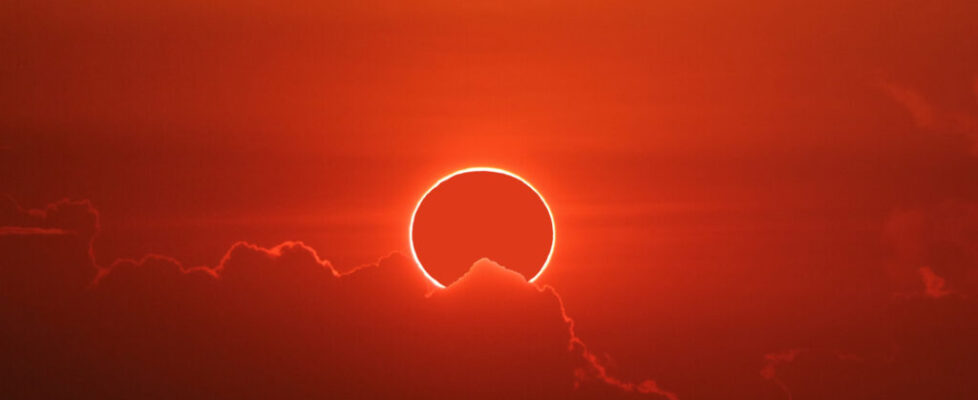Annular Solar Eclipse – Oct. 14, 2023
A partial solar eclipse can be fun to watch, though it’s not even *close* to being as spectacular as a total solar eclipse — and I hope all of you travel to the path of totality to see the total solar eclipse on April 8, 2024, in Mexico or the USA. (More about that later…)
We are fortunate to have a chance to see a partial solar eclipse from all of North America and most of South America on Saturday, October 14, 2023. Indeed, in the USA, from a relatively narrow path, an “annular eclipse” will be visible. This occurs when the the Moon is farther from Earth than average in its elliptical orbit, so it looks too small to fully cover the Sun, which thus appears as an annulus (“ring of fire”) at mid-eclipse. No corona will be visible, unlike the case in a total solar eclipse, so it’s not as spectacular, but still fun to view. (Some articles in the media are making a big deal out of the Oct. 14 event, claiming it’s a total eclipse or as good as a total eclipse — it’s *not*!) A photo is attached here.
The path of annularity is shown at https://www.timeanddate.com/eclipse/map/2023-october-14 , and you can type various cities in the Search box to see whether they are within it (broadly speaking: parts of Texas, New Mexico, Utah, Nevada, and Oregon; small sections of Colorado, Arizona, and California). Other places in the USA will experience a partial eclipse shaped more or less like a “C” — but not the full “ring of fire.”
I encourage you to view the partial eclipse, even if you don’t go to the path of annularity. For example, seen from Berkeley, CA, about 77% of the Sun will be covered. The beginning, middle, and end of the eclipse will be at 8:05 am, 9:19 am, and 10:42 am PDT (respectively) — I got this information by clicking on Berkeley on the map at
https://www.timeanddate.com/eclipse/map/2023-october-14 .
When looking at the Sun, be sure to use a “CE certified” solar filter that blocks 99.999% of the visible light and 100% of the ultraviolet and infrared light. These can be purchased online for a small price (about $1-2 each, depending on how many you buy); for example, go to Amazon.com and type in “solar eclipse glasses CE certified.” For a more durable viewer, you could purchase a small (2″ x 4″, or 4″ x 5″) piece of Shade 14 welder’s glass from a welding supply store; cut a rectangular hole in a sheet of cardboard and tape the glass to it, to make the filter easier to hold and to shield the rest of your face from sunlight (but put on sunscreen, anyway). Also, or instead, make a “pinhole camera” (a pencil-width hole in a sheet of cardboard) and project an image of the Sun onto a shaded surface.
If you’d like to take photographs of the Sun, be sure to use a filter in front of your camera. Also, do *not* look directly at the Sun through the camera viewfinder lens unless you have a filter (though it’s okay to look directly at the LCD display of the Sun without a filter).
Feel free to share all of this information with your family and friends.
Wishing you clear skies,
Alex

